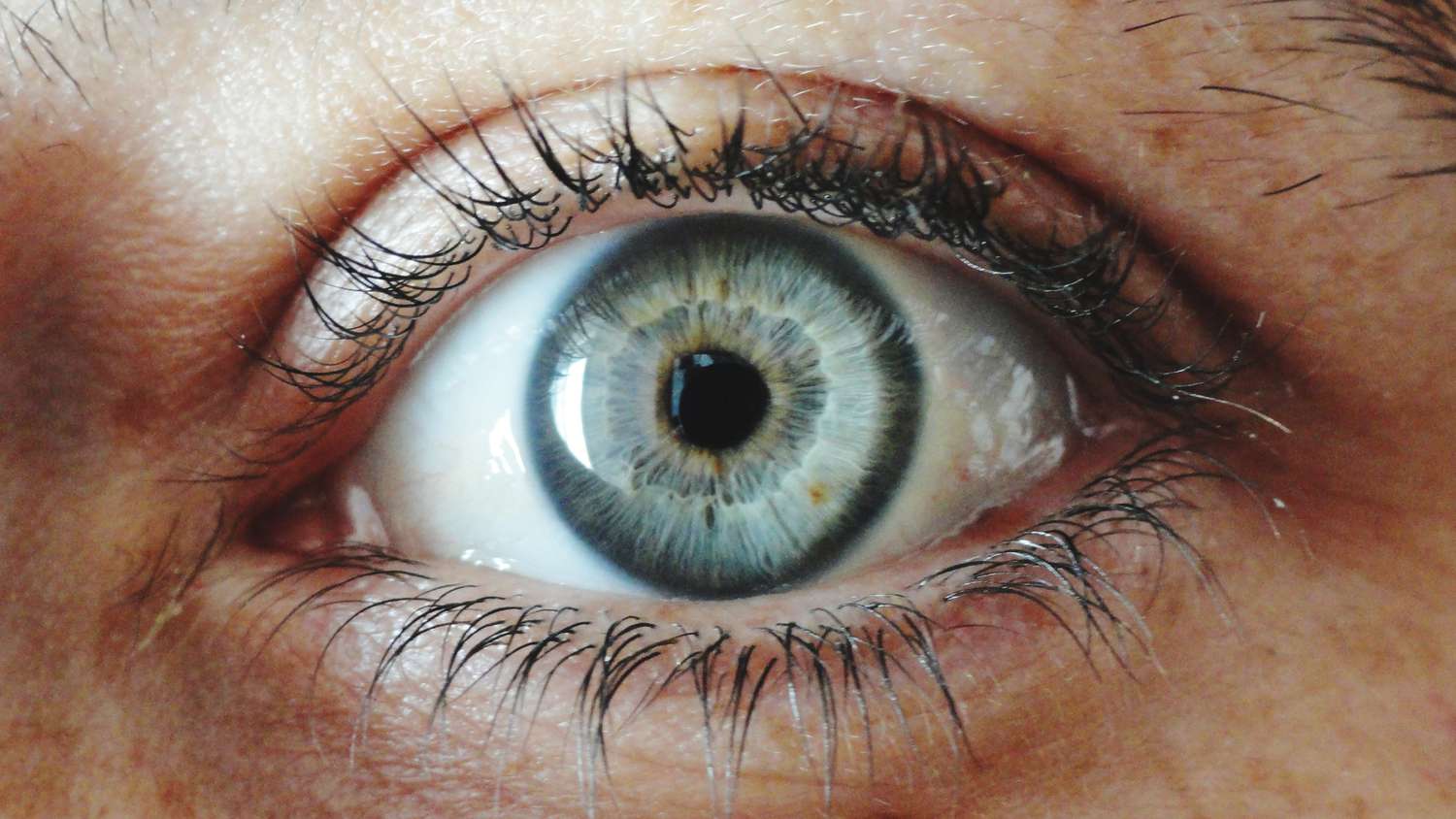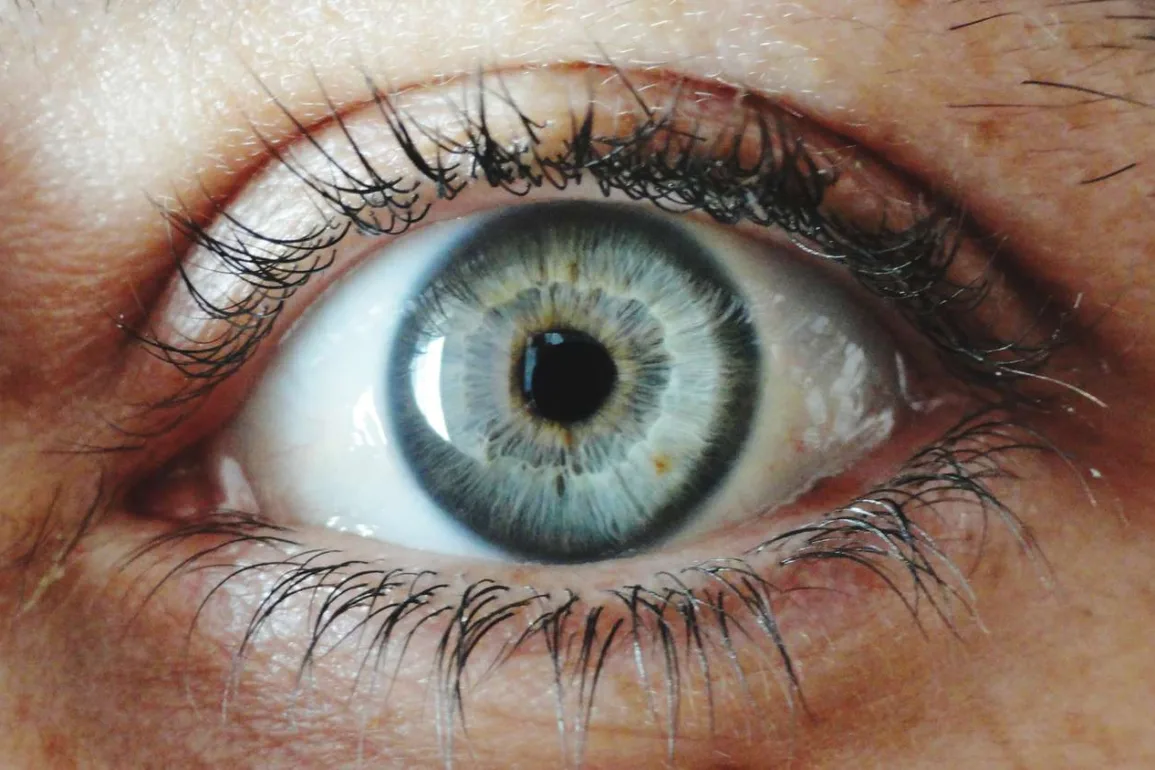
There are four main eye colors—brown, blue, hazel, and green. Green was once considered the rarest eye color, but new classifications say another color may be even less common: gray.
Eye color is an inherited trait with multiple genes affecting the shade. Genes related to the production of pigments—melanin, eumelanin, and pheomelanin—dictate the color of your skin, hair, and eyes. A person’s eye color reflects a unique combination and concentration of pigments in the iris.
This article looks at the genetics of different eye colors and why some are rare than others. It also discusses conditions that may change your eyes’ appearance, health associations with different colors, eye color percentages, and how to change your eye color.
Celeste Muñoz / EyeEm
Most Common and Rarest Eye Colors
The most common eye colors are:
- Brown
- Blue
- Hazel (sometimes grouped with amber)
- Green
Of those four, green is the rarest. It shows up in about 9% of Americans but only 2% of the world’s population. Hazel/amber is the next rarest color after green.
Blue is the second most common and brown tops the list, with 45% of the U.S. population and possibly almost 80% worldwide.
Black is not an eye color. While some eyes may look black, they’re either just a very dark brown or have large pupils.
Gray: The Rarest Eye Color
New classifications have determined that gray is its own standard color. (It was previously, and incorrectly, lumped in with blue.) With this change, gray now tops the list as the rarest eye color.
| EYE COLOR | U.S. POPULATION | WORLD POPULATION |
|---|---|---|
| Gray and other | Less than 1% | Less than 1% |
| Green | 9% | 2% |
| Hazel/amber | 18% | 10% |
| Blue | 27% | 8% to 10% |
| Brown | 45% | 55% to 79% |
There’s not much information on gray-colored eyes. In studies, gray and blue have historically been combined.
Gray eyes may contain just enough melanin in the front layer to dim the blue wavelengths of light that are reflected back by the tissue of the eye. Dark gray eyes have a bit more melanin in the front layer than pale gray eyes.
What Determines Eye Color?
Eye color is influenced by the production of melanin, or pigments, in the iris—the colored part of your eye. More melanin means darker eyes, less means lighter eyes.
Different types of melanin determine the specific hue of eyes. Eumelanin is a black-brown pigment responsible for darker eyes, hair, and skin. Pheomelanin is a yellow-red pigment that’s behind green or amber eyes, red hair, and freckles.
People in countries farther away from the equator tend to have lighter-colored eyes and skin. Darker eyes and skin are common in warmer locales, closer to the equator.
Genetics of Eye Color
Scientists used to think that eye color inheritance was a simple matter of whether genes present were dominant (expressed whenever present) or recessive (only expressed when matched with the same gene).
In other words, brown eye color (considered dominant) would be expected in a child even if only one parent has brown eyes. Blue eye color (considered recessive) would only be expected in a child with two blue-eye parents.
But recent discoveries have shown that the genetics of eye color are more complex than that. Two people with brown eyes, for example, can have a child with lighter eyes.
Most eye-color genes have something to do with the transport, production, and storage of melanin. More melanin in the iris makes for brown eyes, while less of it may mean blue, hazel, green, or gray eyes.
The amount of melanin present in the front of the iris, the back of the iris, and in the stroma layer between them matters too.
What Genes Determine Your Eye Color?
Multiple genes influence the various combinations and concentrations of melanin. The OCA2 gene plays the most prominent role in determining your eye color.
According to research, everyone had brown eyes 10,000 years ago until a genetic mutation affected the 0CA2 gene such that it essentially created a “switch” that turned off the ability to produce brown eyes in a person with the mutation. Scientists believe, therefore, that everyone with blue eyes today can be traces back to one ancestor who had that genetic mutation.
Researchers have identified at least nine other genes involved in the production and distribution of pigments. For example, the HERC2 gene turns the OAC2 gene on and off as needed.
Other genes that play a role in eye color include ASIP, IRF4, SLC24A4, SLC24A5, SLC45A2, TPCN2, TYR, and TYRP1. Countless combinations of these genes produce a continuum of eye colors in individuals.
Other Eye Color Differences
Some rare conditions that affect eye color include:
Heterochromia
People with heterochromia have different colored eyes. Some people are born like this. Often there’s no known reason for it, but it can be caused by a condition known as piebaldism, a lack of pigment-producing cells in patches of hair, skin, and, in some cases, one eye.
Getty Images / WhitneyLewisPhotography
You can also develop heterochromia later in life. It can occur due to:
Heterochromia itself doesn’t need to be treated unless it is caused by an underlying condition.
Anisocoria
Anisocoria is when someone has two different pupil sizes. The larger the pupil, the more black there is in the center of the eye. This isn’t an eye color, but it can make someone look like they have heterochromia.
Anisocoria is usually harmless, but it can be a symptom of some serious eye problems. These may include:
- Nervous system problems
- Previous eye damage
- High stroke risk
- Viral infection
- A condition called Adie’s tonic pupil, in which one pupil doesn’t react well to light
- Horner syndrome, a rare condition involving drooping eyelids, different-sized pupils, and lack of facial sweat
If you have anisocoria along with certain other symptoms, you should see an ophthalmologist (eye doctor). Watch for symptoms such as:
- Dropping eyelids
- Difficulty moving your eye
- Pain in your eye
- Fever
- Headache
- Reduced sweating
Anisocoria itself doesn’t need to be treated, but an underlying condition may need to be.
Albino Eyes: Red, Pink, Violet
Albinism is a condition characterized by low amounts of melanin in the skin, hair, and eyes. In some people, it only affects the eyes. This is called ocular albinism.
People with albinism may have lighter versions of standard eye colors. But they may also have eyes that appear:
- Red
- Pink
- Violet
The iris doesn’t actually have red, pink, or violet pigment, though. These colors result from blood vessels at the back of the eye being visible. In other people, the color of the iris blocks the view of these blood vessels.
People with albinism often have serious vision problems. That’s because melanin helps the eye develop normally before birth.
Do Purple Eyes Exist?
The eyes in a person with albinism may appear purple, but purple irises do not exist. Makeup or lighting may cause a person without albinism’s eyes to appear purple.
Eye Color and Your Health
Having a rare eye color or appearance may seem special and distinctive. It may go beyond appearance, though, as eye color (or shade) may be tied to certain health benefits or concerns.
A 2014 study concluded that women with light-colored eyes were better able to withstand pain during pregnancy than those with darker eyes. The sample size for this study was relatively small, including just 58 women, but another small study had similar results.
A review from 2015 suggests people with darker eyes may have a reduced risk of hearing loss not related to age.
Lighter eye color is also associated with an increased risk of macular degeneration, which causes a loss of your center field of vision, as well as ocular melanoma (cancer in or around the eye).
More research is needed to confirm such connections and associations.
Eye Color and Changes With Age
Your eye color can change in adulthood. Sometimes, it’s not a cause for concern. Other times, it’s due to diseases, medication use, or injury and may need treatment.
If you don’t have gray eyes but they appear to become more gray over time, it may be due to a cataract. This is a clouding of the eye’s lens. Cataracts can affect your vision and may need to be surgically removed. Let your eyecare provider know if your eyes appear to be turning gray or milky.
Brown freckles can develop in your iris over time, usually due to sun exposure. Most of them are harmless but sometimes they can be cancerous, so bring those to your provider’s attention if they occur.
Conditions like Fuchs heterochromic iridocyclitis can lighten your eye color and may lead to serious vision problems. Fuchs involves inflammation in some of the structures at the front of your eye. It may cause:
- Loss of pigment in your eye, which changes the color
- Atrophy (wasting) of the iris
- Cataracts
- Glaucoma, which can cause loss of vision
Because of the potential for serious vision problems you should be evaluated by a healthcare provider if you notice a change in the color of your eyes.
What Is the Most Attractive Eye Color?
According to one survey of 66,000, people find green to be the most attractive eye color. The poll results ranked eye color by attractiveness:
- Green: 20.3%
- Light blue: 16.9%
- Hazel: 16.0%
- Dark blue: 15.2%
- Gray: 10.9%
- Honey: 7.9%
- Brown: 5.9%
Changing Your Eye Color
If you want to change your eye color, contact lenses are the easiest option. You can have color added to lenses you wear to correct your vision.
If you don’t need corrective lenses, you can order some that are purely for looks. However, you should still see an eye-care professional and get a prescription for them. The AAO recommends never buying contact lenses that don’t require a prescription due to an increased risk of eye infections.
Summary
Eye color is determined by a person’s genetics, although sometimes eye color can change due to medication side effects or certain eye conditions. While green eyes used to be considered the rarest eye color, gray eyes are now thought to be rarer.



